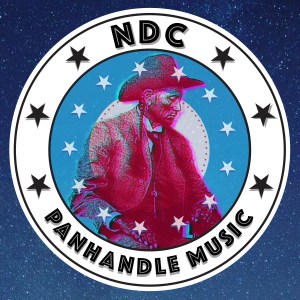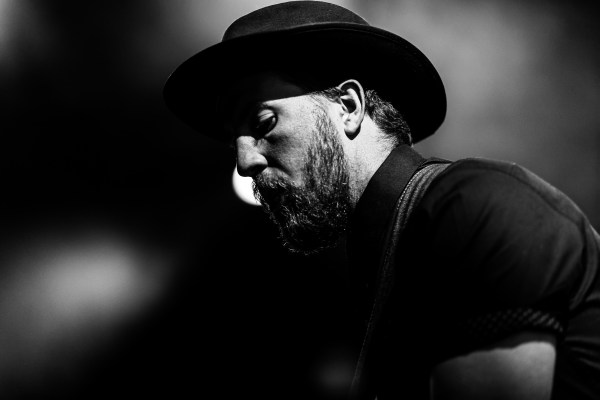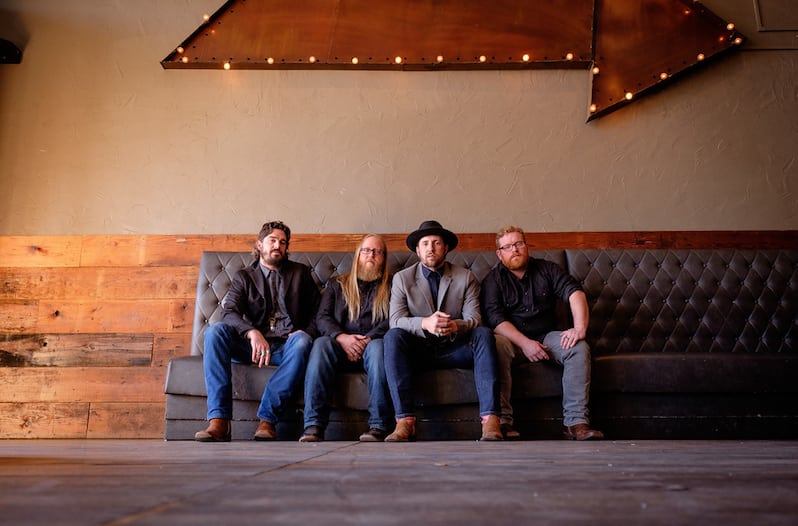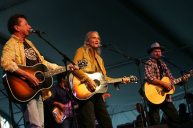Lubbock's No Dry County started using the term "Panhandle Music" a few years back to describe the music that had been coming out of West Texas' dusty Panhandle. While it's certainly been used as a catch-all for artists coming out of the region, it's specifically has been used to give a rough outline of what No Dry County sounds like themselves in a short, timely manner.
Videos by Wide Open Country
It's easy to get wrapped up in trying to define what Panhandle Music is. Everyone from the pioneering bands such as The Maines Brothers, The Flatlanders and Terry Allen to modern-day troubadours like Brandon Adams, Ryan Culwell and William Clark Green have been dubbed as Panhandle Music. In reality, NDC's genre-bending label has less to do with sound and more so to do with a mindset and feel. In short, how do the arid windswept plains and carved up canyons of the Panhandle make you feel? How have they affected you?
After a string of EPs, Ella Rose and To Whom It May Concern, No Dry County found a solid footing with their debut full-length The Night Before, which found the band honing in on a defined sound and style that leaned heavy on anthems and love songs.
For their second full-length efforts, the four-piece outfit (Trent Langford, Bristen Phillips, Matt Newsom and Dub Wood) set out to create an epic of sorts—one revolving around the harsh, yet beautiful badlands and people who inhabit it. Panhandle Music, due out June 29, is a sprawling and expansive musical adventure that soars high for aerial shots and creeps down low for candid narratives.
Setting a Tone
"Bristen is a big part of that," says Langford. "After the previous album, we brought him on board. We gave him the job title of 'Space Filler.' He's always had this atmospheric sound. We needed him to give us that backdrop to what we were doing."
After previous lead guitarist Jonathan Dunlap left the band, Phillips stepped in and assumed the role while still offering up scene setters and cinematic backdrops. "Tucumcari" and "Hey Thunder," the album's opening and closing numbers, were both written by Phillips and set the tone and structure of the album.
"Those two had a different pace," says Phillips. "They're meant to be companion pieces. When we were trying to figure out what this was was going to be, it kind of became obvious."

Phillips says he'd written "Tucumcari" and "Hey Thunder" while listening to a lot of Red Headed Stranger. There's a storybook quality to the numbers that loosely weave together, share the same underlying themes and sonic palette. Phillips, who's also a visual artist, approaches the guitar very much like a painter. It's not quick, rapid punches or licks that characterize his playing, but rather, with long brushstrokes that cover the canvas with a gradual buildup.
That sonic buildup slowly crests like a Texas Panhandle sunrise on the opening "Tucumcari." It never truly disappears though. It ducks in and out through the rest of the album to create a familiar tapestry. Most notable of these returns is the instrumental "Mountain of Clouds," a song that Langford and Phillips call a "return to center."
"The album, it's a mountain," says Phillips. "The structure of the album is like scaling a mountain. The seventh song is like the top step—which is why 'Mountain of Clouds' is at the center. The rest of the album is like climbing back down with 'Hey Thunder' as the closer."
"You start drifting off with the songs between and you're brought back in a way" adds Langford. "It also lets the album breath for a song. You get a moment to find your footing."
Phillips calls "Tucumcari" and "Hey Thunder" companion pieces not only because of their sonic similarities but also because they share a common longing for the rural west. Langford morphs into two characters looking to return to their homelands, albeit in different ways.
Where "Tucumcari" is a classic pining (with lines like "I've been in Big D for way too long. l I left my heart in Tucumcari, yeah but I'm still carrying on") that follows a lonesome ex-rodeo cowboy living in the Dallas Metroplex, "Hey Thunder" is the return of the native son after years wandering around the wilderness. It offers an anthemic welcome home revolving around the bright harmony-laden chorus of "that's all right for these dancehall nights." There's a sense of acceptance and understanding.
"It's still a hard, tough land. It's still difficult to live in," says Langford. "There's better opportunities for folks in other areas. But sometimes, that's where you're supposed to be."
Panhandle Sketches

Courtesy of the artist
That daydreaming quality happens frequently on Panhandle Music. Many of Langford's own characters find themselves spacing out during the daily struggles and patterned routines of their lives. In many instances, they're looking for ways out.
Several of Langford's character sketches find him occupying a varied host of overlooked individuals who have found their way out west. The Kings of Leon-esque dive bar rocker "Elvis Gun Runner" has him morphing into the truck driver who fantasizes about illegally running guns for the famous rock star. The chanting proto-punk stylings of "SS 14" follows a BNSF railway-master just waiting for retirement.
Still, it isn't always playful as the sharp and lively "Elvis Gun Runner" or "SS 14." Langford drifts to the wrong side of the tracks on the mournful "When You Come Around" that tags along with a pair of drug addicts cemented by their own addictions and inability to escape their disappearing one light town.
"For a long time, I thought you should stick to writing about what you know," says Langford. "This record though, it's stories from a varied cast of characters. We wanted to look at some different storylines and look at people within the Panhandle. But I don't think you ever get too far away from your own experiences."
One example is with "On Our Own" where Langford and company demystify the landscape and lifestyle they've helped build and glamorize. "These dreams will forsake you or they can keep a wandering man alive," sings Langford. It's a love-hate relationship that Langford suggests.
Two standouts, in particular, are long-time set staples. Little Hurricane's "Sheep In Wolves Clothes" gets transformed into an addictive slow dance duet with the help of Nashville rocker Brandy Zdan. On sweaty rocker "Sway," the band takes on a fan favorite written by fellow Panhandle songwriter Will Boreing of Stocklyn.
Creating A Canvas

Courtesy of the artist
No Dry County made Panhandle Music with producer Adam Odor, a West Texas ex-pat of sorts himself, at Yellow Dog Studios in Wimberley, Texas.
"The first time we went into the studio, we didn't really have this specific plan in mind," says Langford. "We actually talked about doing this Panhandle Music concept for the next album. We thought we'd maybe cut an EP just to get our feet wet and see how well we worked with Adam."
Within the first days though, Langford and company knew Odor was their man—someone who could give them an outside perspective, but also jump on board with the journey of the album.
"He's as excited about the twists and turns as we are," says Langford. "He's a champion of every record he's a part of. I think he really connected to this record because of his own roots in the Panhandle."
After days in the studio, NDC and Odor would sit around the glow of a campfire and have long discussions about what exactly "Panhandle Music" is, was and who. In part, they'd theorize how the indigenous music of the plains and early settlements tapped into the same unique forces found out west.
As expected, much of Panhandle Music takes its cues from other artists found within the region. Major influences heard are from the weighty atmospheric tones created by post-rock darlings Explosions in the Sky and Lubbock alt-country pioneers Thrift Store Cowboys. Often, they slow down to a glacial pace to set a scene or restore order. At times, they occupy a barren frontier similar to the likes of modern West Texas drifters like Red Shahan and Ryan Bingham. But while those two tend to buck in sepia-toned hues, NDC goes further up in the sky for their canvas-setting textures.
Much like early country-rockers like Joe Ely, NDC tends to drift closer to the rocking side of Americana. Still, there's careful attention paid to detail and narrative. Like many of their Lubbock contemporaries, NDC was shaped by the dive bar circuit, songwriter circles and open jams that are scattered across the Hub City.
All these forces press their weight onto Panhandle Music's interwoven tales and sonic soundscapes. Through it all, we gain a better understanding of what's coming out of the Texas Panhandle. But even more so, we get a better understanding of who No Dry Country is.




